Which Couch Material is the Most Low Maintenance? Experts Share the Best Fabric for Busy (but Stylish) Households
Busy lives require durable, easy-to-care-for sofas — so whether you have pets, kids or love a TV dinner, this is what to look for when picking out a new couch

- What makes couch materials low maintenance?
- What are performance fabrics?
- Why shop sofas with performance upholstery?
- How do performance fabrics compare to non-performance fabrics?
- What is the next best alternative to performance fabrics?
- FAQs
- What makes couch materials low maintenance?
- What are performance fabrics?
- Why shop sofas with performance upholstery?
- How do performance fabrics compare to non-performance fabrics?
- What is the next best alternative to performance fabrics?

Lola Houlton
Sofas are the centerpiece of any living space, and while they play a key role in your home’s design, they also serve a functional purpose and therefore need to work to support your lifestyle. For most households, a couch that is beautiful but requires constant upkeep to stay clean and pristine just isn’t practical — the best ones are those that balance style with durability, and are designed to withstand the demands of everyday life.
If you're searching for the best sofa for your home, prioritizing a design upholstered with low-maintenance fabric can keep this investment looking better for longer, simplify your cleaning schedule, and ensure it endures.
We consulted with experts to determine which couch material stands out as the most low-maintenance option — maintaining its appearance with minimal effort — as well as the close runners-up. Performance fabrics were a clear winner, but there are other options to shop, too. Here, we list out everything you need to know.
What makes couch materials low maintenance?
Of course, what qualifies as low-maintenance can vary from household to household, but generally, these are top of our list when searching for couches that offer easy upkeep:
- Stain resistance: When choosing a low-maintenance couch material, we prioritize one that resists stains and marks while remaining easy to clean — a crucial consideration when it comes to cleaning a sofa effectively. Many stain-resistant fabrics achieve this through either special coatings or tightly woven material structures that prevent liquids and dirt from penetrating the fibers.
- Fade resistance: Another important consideration is materials that resist fading over time. This will be especially important if your sofa is placed in direct sunlight. Anti-fade properties are often achieved through UV-resistant treatments or by using inherently durable synthetic fibers.
- Pet hair resistance: For pet owners, consider the best couch materials for dogs and cats, made with fabrics designed to repel pet hair, and resist claw marks. Couches with tightly woven fabric will make it harder for fur to stick and claws to snag.
- High rub count: Longevity is also an essential factor. A well-made couch with durable upholstery and resilient cushion structures can significantly impact how long a sofa should last. "One thing to keep an eye out for when selecting fabric is choosing one with a high rub count," advises Meghan Kluth, founder and lead designer at Moment of Kluth Design. Check for upholstery fabrics with a Martindale rating above the industry standard of 20,000 rubs. This test measures how many "rubs" a fabric can withstand before showing wear, such as pilling, fading, or shedding. Meghan Kluth continues, "Anything above 15,000 double rubs is considered heavy, meaning it will perform well long-term. This can be found at the back of a fabric sample." While not all retailers disclose this information, it’s an excellent benchmark for durability and a strong indicator of a fabric's ability to stand up to daily use.
What are performance fabrics, and why are they so durable as couch materials?
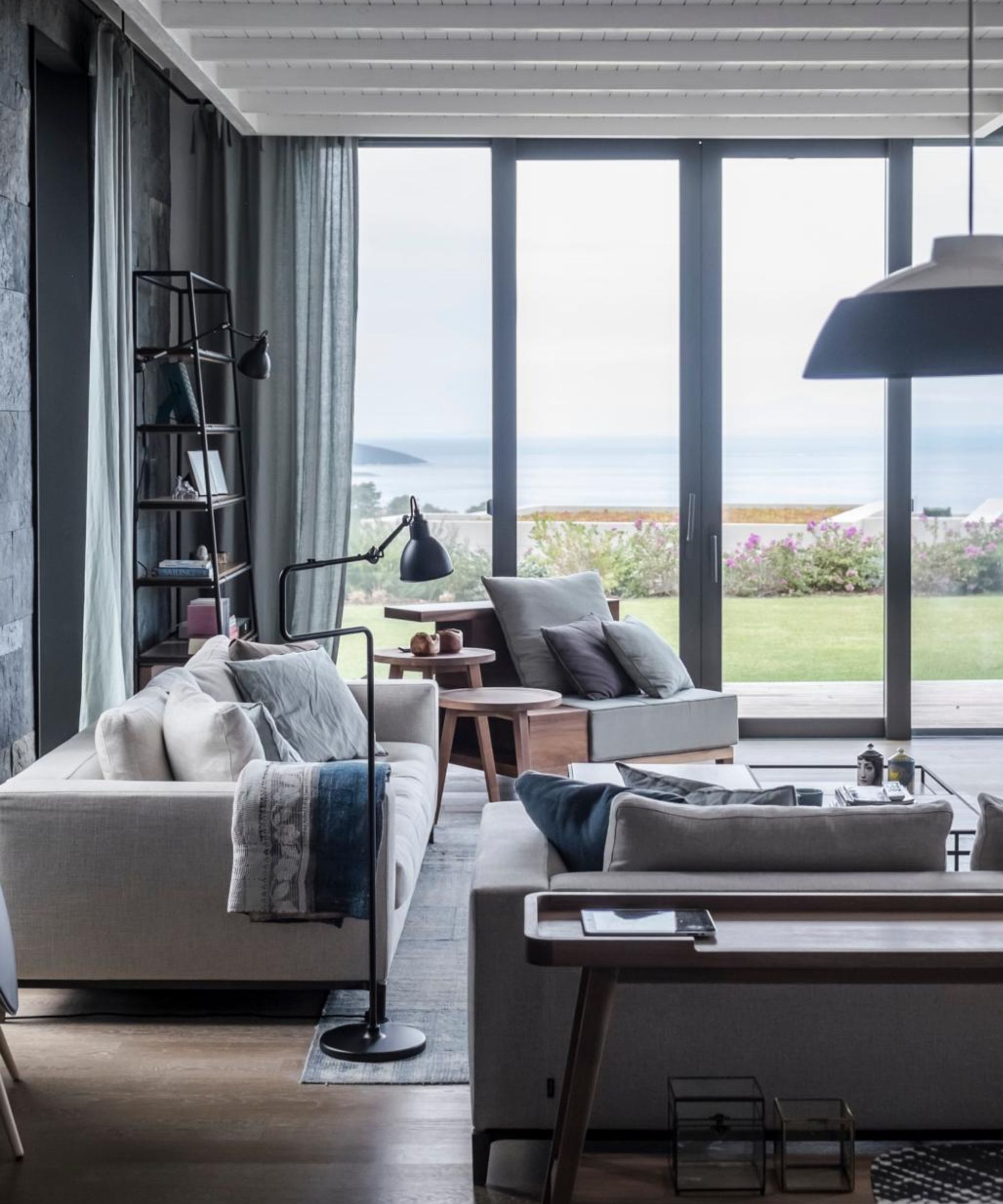
A deserving winner of the title 'the most low-maintenance couch material', performance fabrics are engineered to resist stains, fading, and everyday wear, making them ideal for busy households. This resistance comes from either the inherent properties of the fibers used — such as olefin, acrylic, nylon, or polyester — or from a special performance coating applied to the fabric. These coatings typically include fluoropolymers, silicones, or other stain-repellent treatments that create a barrier against spills and dirt.
It’s worth noting that some coatings may emit volatile organic compounds (VOCs), which can contribute to indoor air pollution. If you’re concerned about potential health impacts, look for performance fabrics certified as low-VOC or free from harmful chemicals, such as those carrying Greenguard or OEKO-TEX certifications.
"A performance fabric will always be the key to maintaining the life and quality of your couch,” says Meghan Kluth. "Recently, I've found couches with the composition 42% Polyester, 24% Polypropylene, 20% Cotton, 14% Viscose (Rayon) to be very durable.
"When shopping, most major retailers will offer a performance fabric option when you're selecting the fabric for your couch/sectional," Meghan continues. "If customizing, Kravet and Sunbrella make great performance options."
Why shop sofas with performance upholstery?
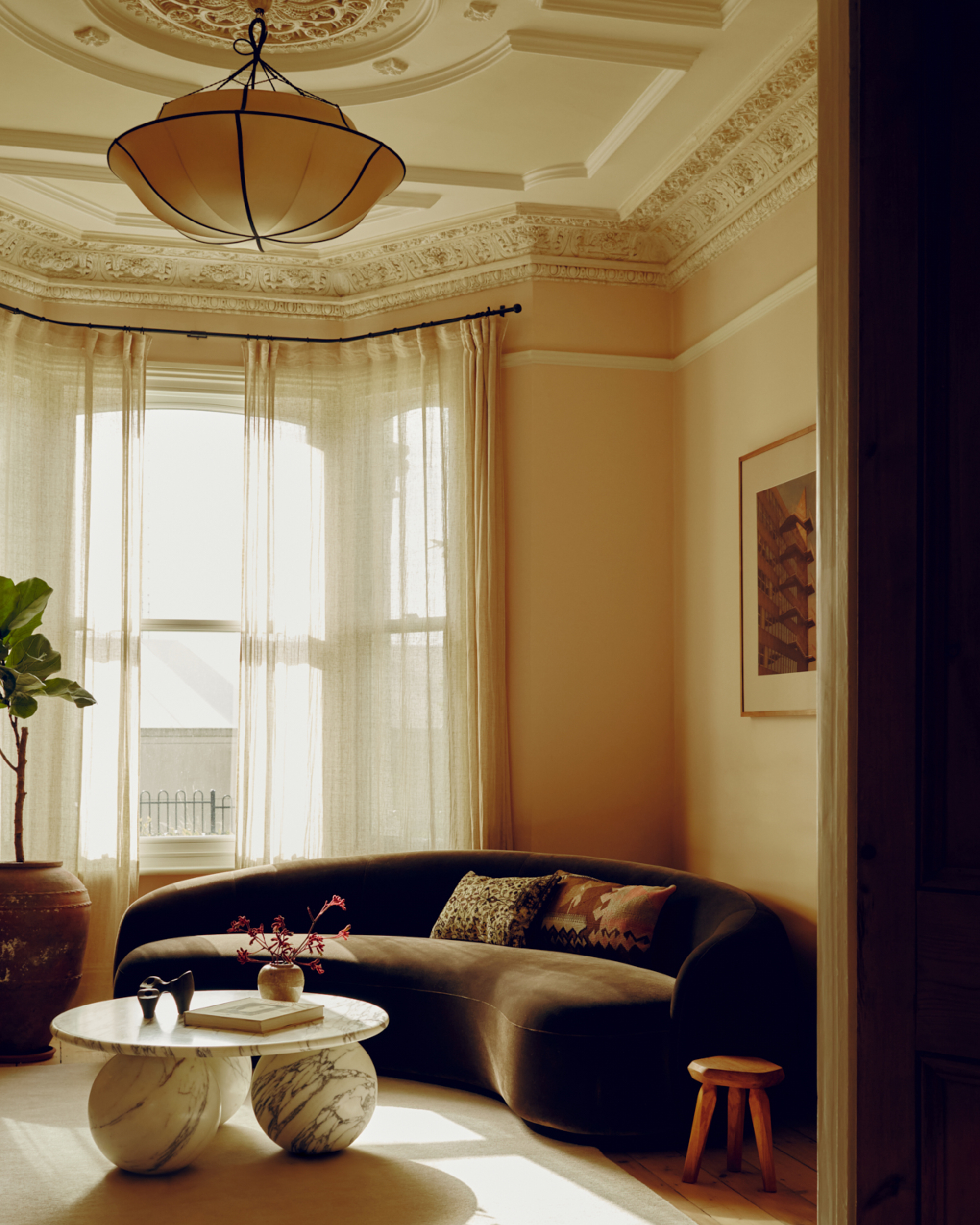
Performance fabrics, like Crypton, are ideal for homes with kids and pets. They’re stain-resistant, durable, and easy to clean, so you don’t have to worry about spills or accidents.
Tami O'Malley, CEO and lead designer at Tami O'Malley Design says, "Crypton fabrics are a fantastic choice for families because they can handle spills, stains, and pet accidents without showing wear."
Laetitia Laurent, principal designer at Laure Nell Interiors adds: "These fabrics have become much more widely available recently and are a fantastic blend of style and durability. They offer a great combination of comfort and long-lasting durability without sacrificing style," plus "the range of colors and textures available also allows families to keep their spaces looking polished, even with the daily wear and tear of life."
How do performance fabrics compare to non-performance fabrics?
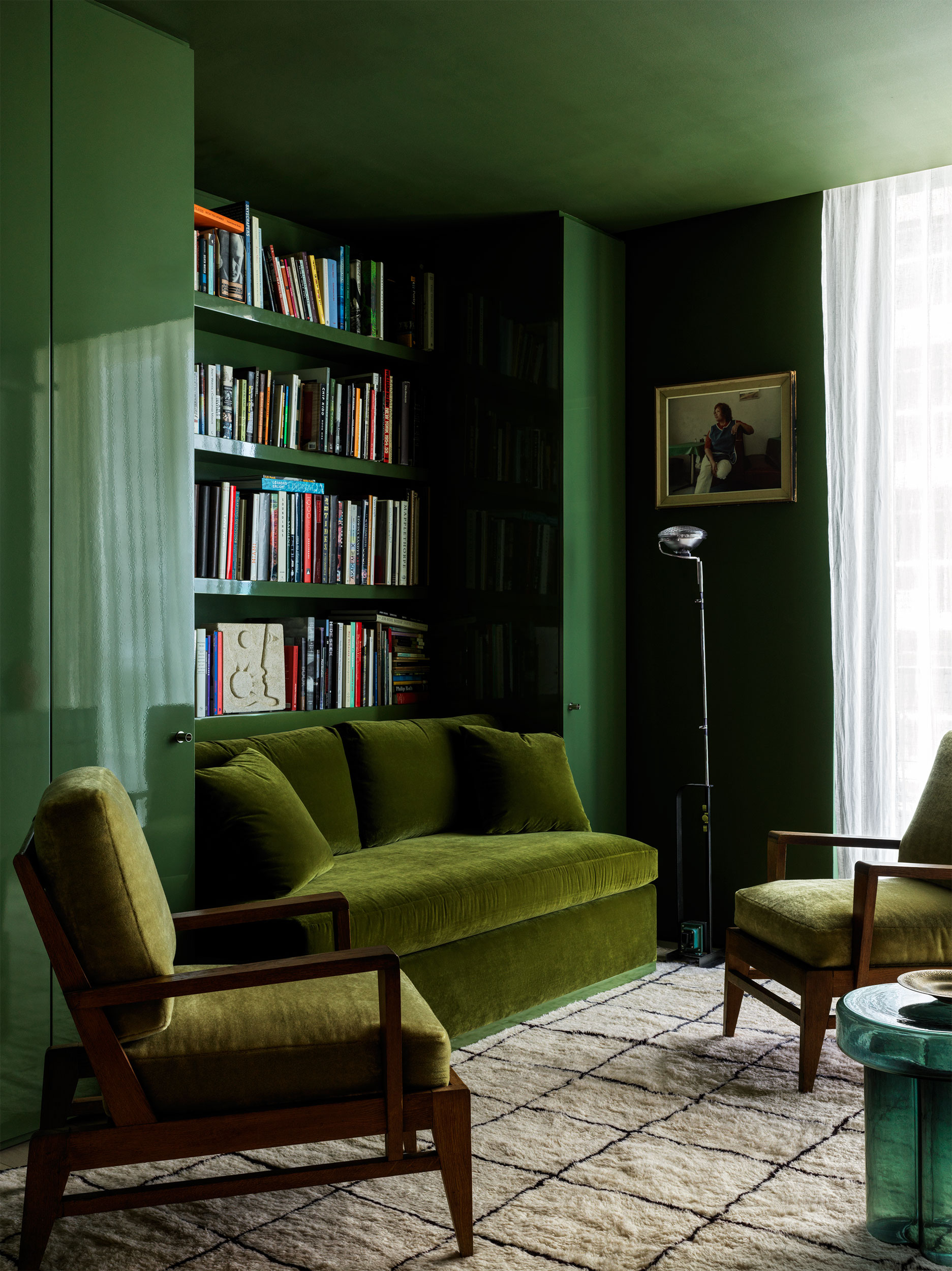
Performance fabrics outshine non-performance fabrics in several key areas, particularly when it comes to durability, stain resistance, and ease of maintenance, making them ideal for busy households, or high-traffic areas.
For instance, performance velvet (also considered the most comfortable fabric for sofas) has gained popularity as a lower-maintenance alternative to traditional velvet, but it still requires more upkeep than other performance textiles. As Laetitia explains, "While it's softer and more durable than traditional velvet, [performance velvet] still requires a little more upkeep compared to other performance fabrics. It’s great if you're after a plush, luxurious look, but for high-traffic family rooms, I usually recommend leather or a more tightly woven performance fabric that’s both durable and low maintenance."
When it comes to which fabrics sit at the high-maintenance end of the spectrum, Victoria Holly of Victoria Holly Interiors advises: "Make sure you avoid fabrics that have viscose or Tencel. These fabrics are reactive to water which means that if you casually spill a glass of water, it will chemically burn the fabric and turn it yellow. And because it’s a chemical burn, the stain doesn’t come out. And it also means you can’t use any water to clean it."
What is the next best alternative to performance fabrics?
If a performance fabric couch isn’t on the cards, there are a couple of other stand-out alternatives that still tick a lot of the boxes, giving you that easy-to-clean, durable couch material without needing to go the performance fabric route.
"If you’re looking for something with a little more texture, leather and microfiber sofas are fantastic choices," recommends Amy Granger at Dania Furniture and Scandinavian Designs.
Microfiber
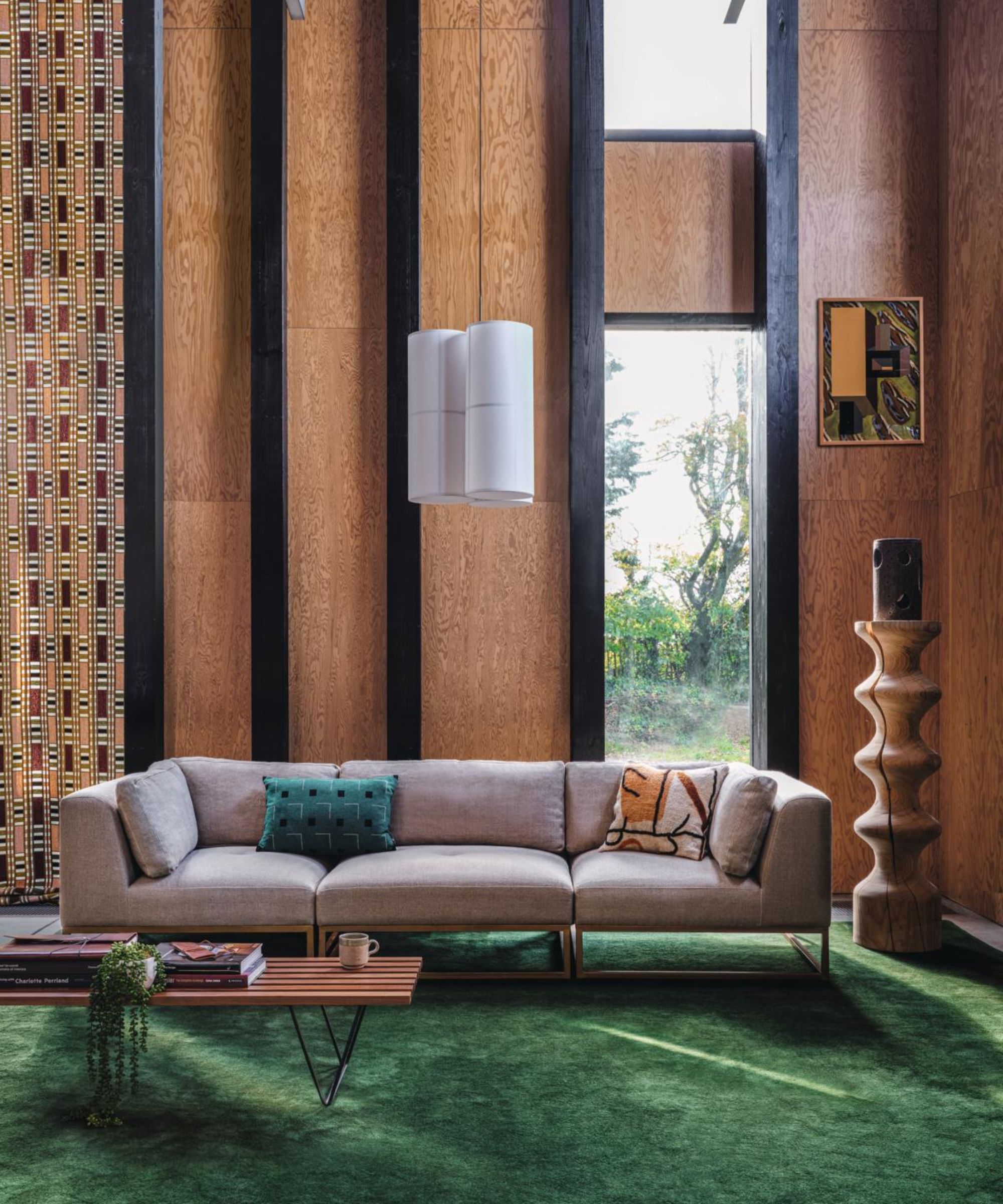
Microfiber couches are generally more affordable than performance fabrics, making them an attractive choice for budget-conscious buyers. Microfiber also stands out for its velvety, smooth texture that feels cozy and inviting.
Like performance fabrics, microfiber is naturally stain-resistant, meaning you can easily clean a microfiber couch using just water or mild soap, making it ideal for everyday use. Additionally, microfiber makes for a highly pet-friendly sofa, as it resists pet hair and scratches.
Overall, microfiber is a fantastic choice for households looking for a budget and pet-friendly fabric that’s softer and more casual compared to performance fabrics.
Leather (genuine or faux)
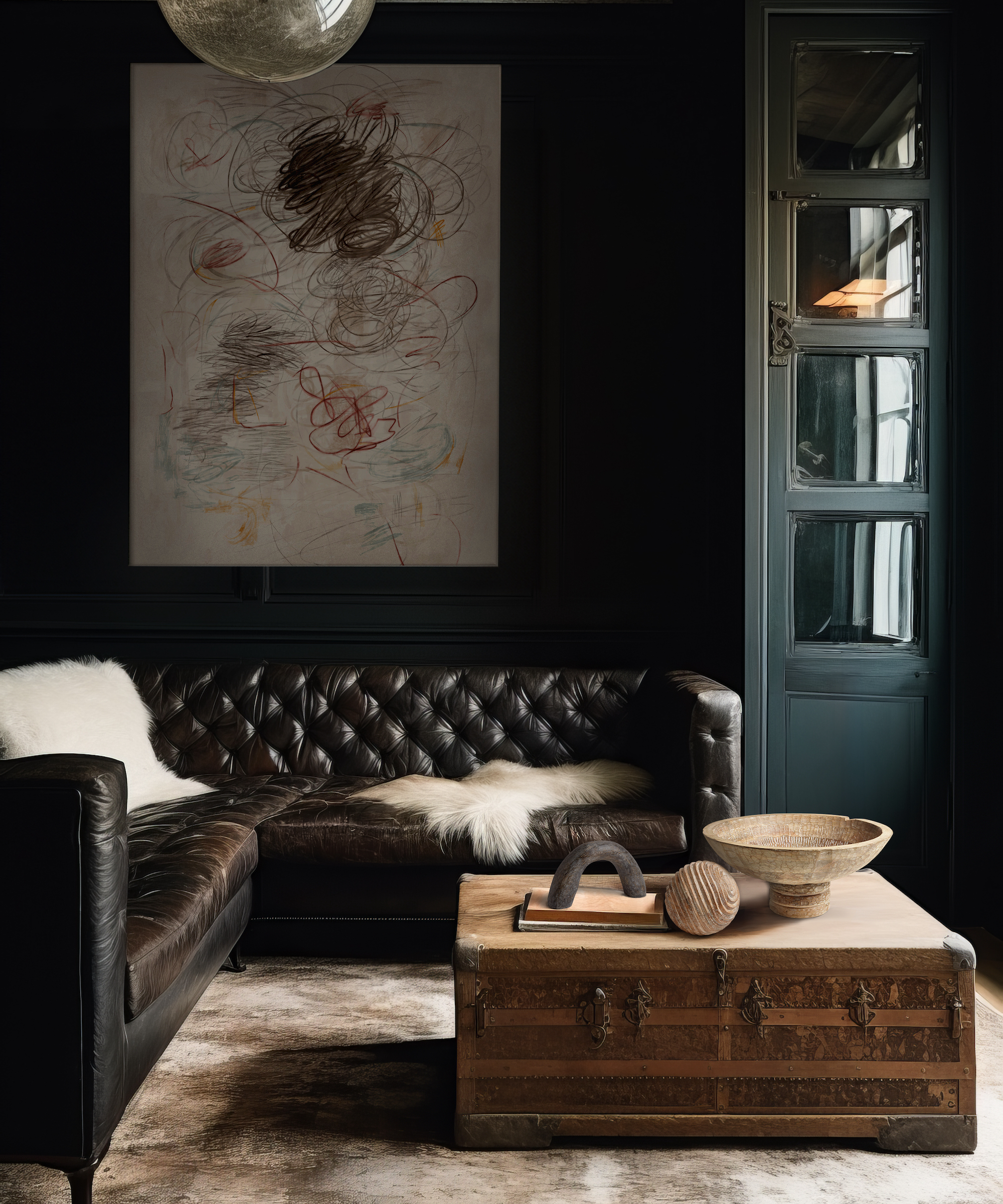
"Leather is not only classic but also low-maintenance," says Tami O'Malley, CEO and lead designer at Tami O'Malley Design. "It’s super easy to wipe clean and gets even better with age. Leather upholstery is a durable and low-maintenance option for busy households."
To clean your leather sofa and keep it in the best possible condition, regularly use a leather conditioner, such as this leather honey conditioner from Amazon, which will help maintain its softness and prevents cracking, ensuring it lasts for years while maintaining its natural beauty.
That said, choosing the right type of leather is crucial when shopping for the best leather sofas. Laetitia explains: "Leather is naturally tough and easy to clean," she says, so long as you choose the right kind; otherwise, you might unintentionally create more work for yourself.
"For example, aniline leather lacks a protective coating, meaning it will beautifully patina and soften over time, but could also stain and mark easily. A pigmented leather sofa boasts a protective layer of dye that resists scratches and stains; look for low-maintenance couch materials in line with that. Semi-aniline, while not as protected as pigmented leather, and genuine leather could also work here."
FAQs
What couch material lasts the longest?
Outside of performance fabrics, when it comes to choosing a sofa material that lasts the longest, durability is key, and leather stands out as a top choice. "Leather is durable, resistant to wear, and can develop a beautiful patina over time, making it a real favorite when it comes to longevity," says Barbara Stern, textile and cleaning expert at Ottoman Textiles.
Microfiber, while not as timeless as leather, also offers great resilience against daily use, resists stains, and holds up well against fading, making it a top pick for households with pets or children.
"However, the construction of the sofa is just as important as the material," adds Barbara Stern. "Solid hardwood frames and high-density foam cushions provide long-lasting support and structure."
Ultimately, when it comes to longevity, leather is the champion. Its durability, combined with the ability to age beautifully, makes it a solid investment for long-term use.
What is the best couch to keep clean?
When it comes to cleaning a sofa, choosing the right material is essential for ease of maintenance. Alongside performance fabrics, both microfiber and leather make cleaning a breeze – requiring little effort over time. Microfiber excels in stain resistance, while leather offers easy wipe-ability and impressive durability, ensuring both materials stand up to everyday use with minimal upkeep.
Barbara Stern says, "Microfiber is one of the best materials, as it gives an excellent facility against stains and is easy to keep clean. It rebuffs most liquids, which can then be blotted up before they seep in. It cleans easily using a simple mixture of mild soap and water.
"Leather is another very good option, with spills wiped off instantly and not collecting dust or allergens."
Barbara also recommends choosing darker fabrics or patterned materials if you're concerned about visible stains or wear. These will camouflage everyday marks, helping your sofa maintain its clean appearance for longer.
To further extend the life of your couch — performance or not — and keep it looking its best, Meghan Kluth recommends spraying your new couch with Scotchgard straight after purchase to prevent stains, though its important to use the right type for your sofa's material. Used correctly, and following the manufacturer's instructions, this will add a protective layer to fabrics, helping to repel liquids, dirt, and stains, preventing spills from being absorbed into the material, and making them much easier to clean. This four-pack of Scotchgard sprays is available on Amazon, with over 27,000 reviews and a rating of 4.6 stars; it is recommended for fabric sofas. .
This simple step can help maintain your sofa's appearance for years to come, ensuring it remains both functional and stylish with minimal effort.
Sofas are the centerpiece of any living space, and while they play a key role in your home’s design, they also serve a functional purpose and therefore need to work to support your lifestyle. For most households, a couch that is beautiful but requires constant upkeep to stay clean and pristine just isn’t practical — the best ones are those that balance style with durability, and are designed to withstand the demands of everyday life.
If you're searching for the best sofa for your home, prioritizing a design upholstered with low-maintenance fabric can keep this investment looking better for longer, simplify your cleaning schedule, and ensure it endures.
We consulted with experts to determine which couch material stands out as the most low-maintenance option — maintaining its appearance with minimal effort — as well as the close runners-up. Performance fabrics were a clear winner, but there are other options to shop, too. Here, we list out everything you need to know.
What makes couch materials low maintenance?
Of course, what qualifies as low-maintenance can vary from household to household, but generally, these are top of our list when searching for couches that offer easy upkeep:
- Stain resistance: When choosing a low-maintenance couch material, we prioritize one that resists stains and marks while remaining easy to clean — a crucial consideration when it comes to cleaning a sofa effectively. Many stain-resistant fabrics achieve this through either special coatings or tightly woven material structures that prevent liquids and dirt from penetrating the fibers.
- Fade resistance: Another important consideration is materials that resist fading over time. This will be especially important if your sofa is placed in direct sunlight. Anti-fade properties are often achieved through UV-resistant treatments or by using inherently durable synthetic fibers.
- Pet hair resistance: For pet owners, consider the best couch materials for dogs and cats, made with fabrics designed to repel pet hair, and resist claw marks. Couches with tightly woven fabric will make it harder for fur to stick and claws to snag.
- High rub count: Longevity is also an essential factor. A well-made couch with durable upholstery and resilient cushion structures can significantly impact how long a sofa should last. "One thing to keep an eye out for when selecting fabric is choosing one with a high rub count," advises Meghan Kluth, founder and lead designer at Moment of Kluth Design. Check for upholstery fabrics with a Martindale rating above the industry standard of 20,000 rubs. This test measures how many "rubs" a fabric can withstand before showing wear, such as pilling, fading, or shedding. Meghan Kluth continues, "Anything above 15,000 double rubs is considered heavy, meaning it will perform well long-term. This can be found at the back of a fabric sample." While not all retailers disclose this information, it’s an excellent benchmark for durability and a strong indicator of a fabric's ability to stand up to daily use.
What are performance fabrics, and why are they so durable as couch materials?

A deserving winner of the title 'the most low-maintenance couch material', performance fabrics are engineered to resist stains, fading, and everyday wear, making them ideal for busy households. This resistance comes from either the inherent properties of the fibers used — such as olefin, acrylic, nylon, or polyester — or from a special performance coating applied to the fabric. These coatings typically include fluoropolymers, silicones, or other stain-repellent treatments that create a barrier against spills and dirt.
It’s worth noting that some coatings may emit volatile organic compounds (VOCs), which can contribute to indoor air pollution. If you’re concerned about potential health impacts, look for performance fabrics certified as low-VOC or free from harmful chemicals, such as those carrying Greenguard or OEKO-TEX certifications.
"A performance fabric will always be the key to maintaining the life and quality of your couch,” says Meghan Kluth. "Recently, I've found couches with the composition 42% Polyester, 24% Polypropylene, 20% Cotton, 14% Viscose (Rayon) to be very durable.
"When shopping, most major retailers will offer a performance fabric option when you're selecting the fabric for your couch/sectional," Meghan continues. "If customizing, Kravet and Sunbrella make great performance options."
Why shop sofas with performance upholstery?

Performance fabrics, like Crypton, are ideal for homes with kids and pets. They’re stain-resistant, durable, and easy to clean, so you don’t have to worry about spills or accidents.
Tami O'Malley, CEO and lead designer at Tami O'Malley Design says, "Crypton fabrics are a fantastic choice for families because they can handle spills, stains, and pet accidents without showing wear."
Laetitia Laurent, principal designer at Laure Nell Interiors adds: "These fabrics have become much more widely available recently and are a fantastic blend of style and durability. They offer a great combination of comfort and long-lasting durability without sacrificing style," plus "the range of colors and textures available also allows families to keep their spaces looking polished, even with the daily wear and tear of life."
How do performance fabrics compare to non-performance fabrics?

Performance fabrics outshine non-performance fabrics in several key areas, particularly when it comes to durability, stain resistance, and ease of maintenance, making them ideal for busy households, or high-traffic areas.
For instance, performance velvet (also considered the most comfortable fabric for sofas) has gained popularity as a lower-maintenance alternative to traditional velvet, but it still requires more upkeep than other performance textiles. As Laetitia explains, "While it's softer and more durable than traditional velvet, [performance velvet] still requires a little more upkeep compared to other performance fabrics. It’s great if you're after a plush, luxurious look, but for high-traffic family rooms, I usually recommend leather or a more tightly woven performance fabric that’s both durable and low maintenance."
When it comes to which fabrics sit at the high-maintenance end of the spectrum, Victoria Holly of Victoria Holly Interiors advises: "Make sure you avoid fabrics that have viscose or Tencel. These fabrics are reactive to water which means that if you casually spill a glass of water, it will chemically burn the fabric and turn it yellow. And because it’s a chemical burn, the stain doesn’t come out. And it also means you can’t use any water to clean it."
What is the next best alternative to performance fabrics?
If a performance fabric couch isn’t on the cards, there are a couple of other stand-out alternatives that still tick a lot of the boxes, giving you that easy-to-clean, durable couch material without needing to go the performance fabric route.
"If you’re looking for something with a little more texture, leather and microfiber sofas are fantastic choices," recommends Amy Granger at Dania Furniture and Scandinavian Designs.
Microfiber

Microfiber couches are generally more affordable than performance fabrics, making them an attractive choice for budget-conscious buyers. Microfiber also stands out for its velvety, smooth texture that feels cozy and inviting.
Like performance fabrics, microfiber is naturally stain-resistant, meaning you can easily clean a microfiber couch using just water or mild soap, making it ideal for everyday use. Additionally, microfiber makes for a highly pet-friendly sofa, as it resists pet hair and scratches.
Overall, microfiber is a fantastic choice for households looking for a budget and pet-friendly fabric that’s softer and more casual compared to performance fabrics.
Leather (genuine or faux)

"Leather is not only classic but also low-maintenance," says Tami O'Malley, CEO and lead designer at Tami O'Malley Design. "It’s super easy to wipe clean and gets even better with age. Leather upholstery is a durable and low-maintenance option for busy households."
To clean your leather sofa and keep it in the best possible condition, regularly use a leather conditioner, such as this leather honey conditioner from Amazon, which will help maintain its softness and prevents cracking, ensuring it lasts for years while maintaining its natural beauty.
That said, choosing the right type of leather is crucial when shopping for the best leather sofas. Laetitia explains: "Leather is naturally tough and easy to clean," she says, so long as you choose the right kind; otherwise, you might unintentionally create more work for yourself.
"For example, aniline leather lacks a protective coating, meaning it will beautifully patina and soften over time, but could also stain and mark easily. A pigmented leather sofa boasts a protective layer of dye that resists scratches and stains; look for low-maintenance couch materials in line with that. Semi-aniline, while not as protected as pigmented leather, and genuine leather could also work here."
Be The First To Know
The Livingetc newsletters are your inside source for what’s shaping interiors now - and what’s next. Discover trend forecasts, smart style ideas, and curated shopping inspiration that brings design to life. Subscribe today and stay ahead of the curve.

Brigid Kennedy is a freelance writer and former style editor for Livingetc.com, where she scoured the internet for the best and most stylish deals on home decor and more. She also served as the website's in-house sofa expert, completely revamping and reworking Livingetc's expansive sofa buying guide by interviewing a total of 17 interior designers and sofa experts at top brands like Article and Benchmade Modern; sitting on upwards of 50 sofas across both Pittsburgh and New York City; extensively polling her friends and family for their own sofa-buying anecdotes and product recommendations; and traveling to Dallas, Texas, to tour the floor of a couch factory. In total, she estimates she has spent 40+ hours (and counting!) reading, writing, and talking about couches with accredited sofa connoisseurs o then pass that knowledge on to you. She describes her personal design style as colorful and clean, and in her free time enjoys reading, watching movies, and curating impossibly niche playlists on Spotify. She recently relocated from Manhattan to Pittsburgh, Pennsylvania, where she's decorating and DIYing a new home downtown.
- Lola HoultonNews writer
-
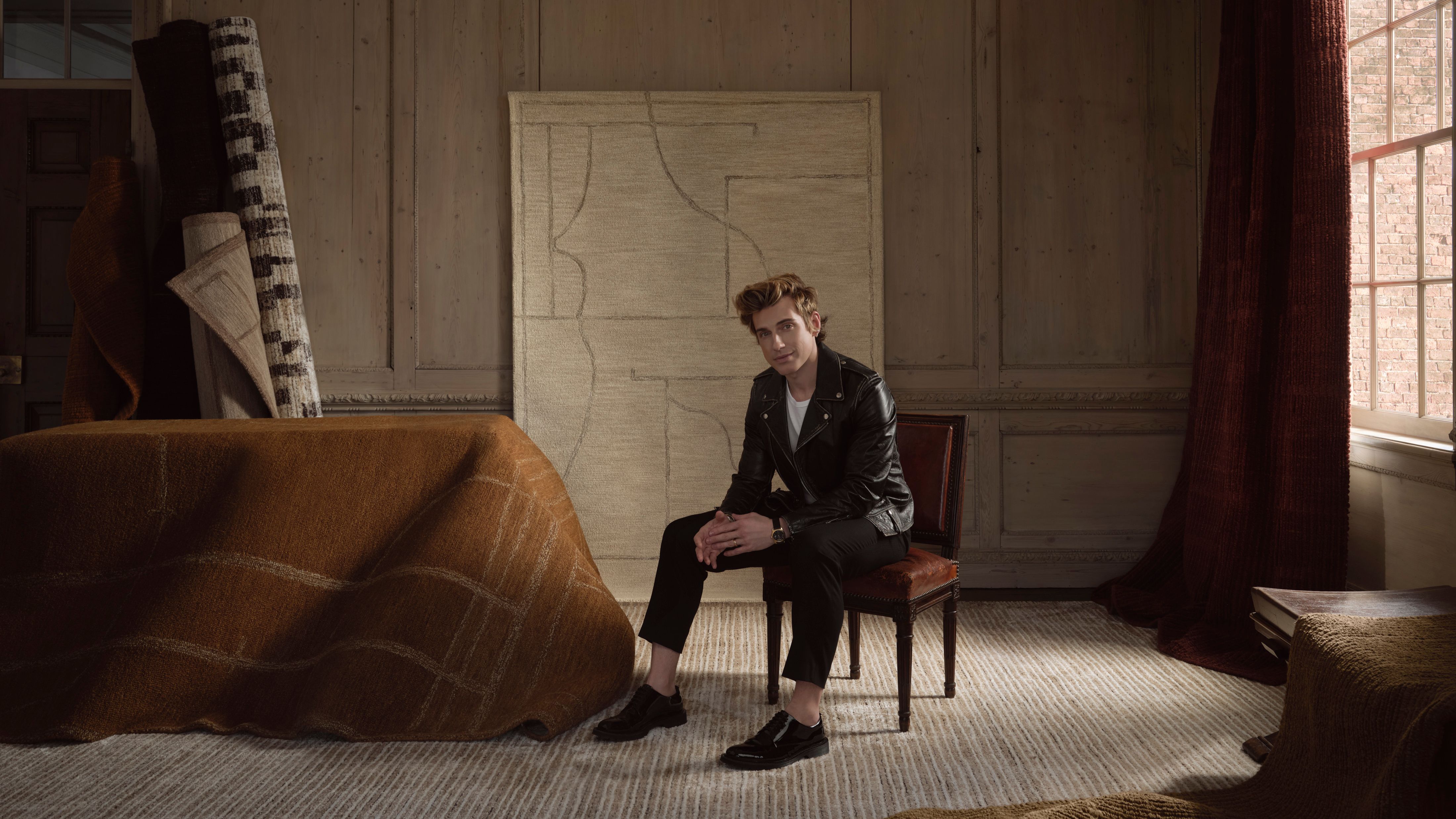 Jeremiah Brent Captures the Grit and Glamour of NYC in His New Loloi Collaboration
Jeremiah Brent Captures the Grit and Glamour of NYC in His New Loloi CollaborationThe TV-famous interior designer looked out of his own window — and hit the pavement — for a collection that turns city spirit into tactile design
By Julia Demer
-
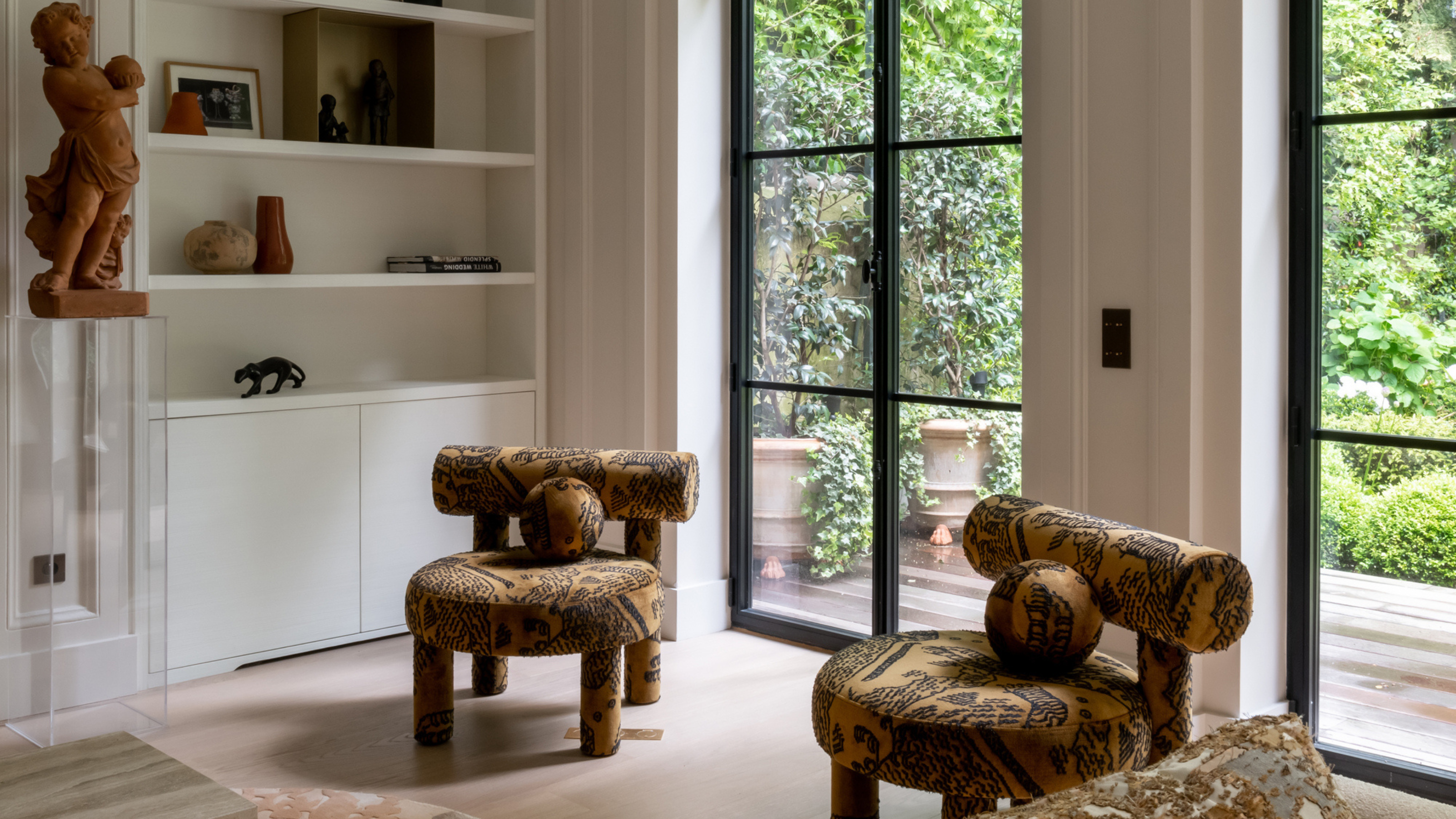 This Specific Fabric Print Is Literally Everywhere Right Now — Here's Why
This Specific Fabric Print Is Literally Everywhere Right Now — Here's WhyIt's whimsical, artistic, and full of character. We've called it already: Dedar's 'Tiger Mountain' is the fabric that will define 2025
By Devin Toolen
-
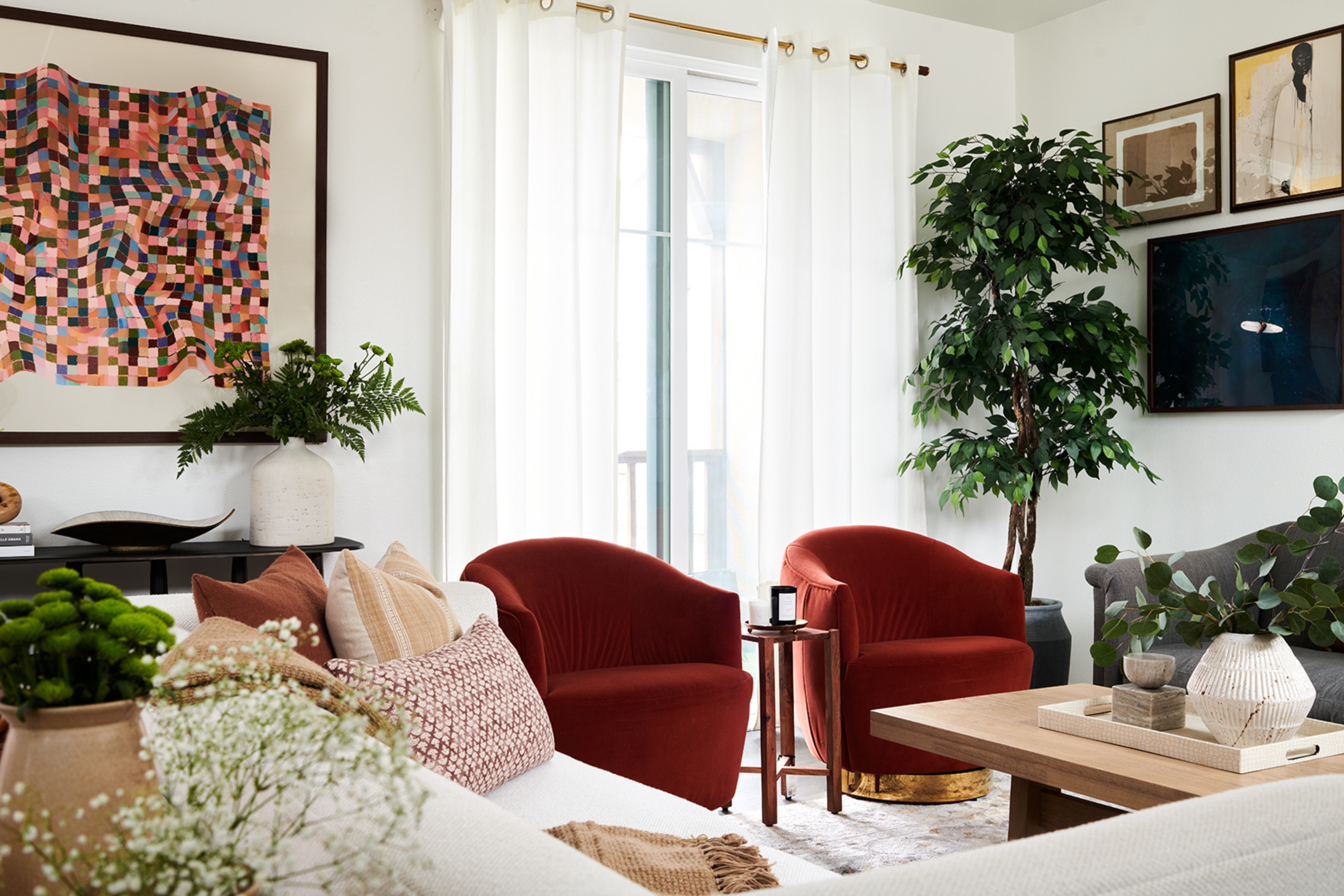 I Keep Seeing TVs *Behind* Sofas in Two Couch Living Rooms — But Does This Emerging Layout Really Make Sense?
I Keep Seeing TVs *Behind* Sofas in Two Couch Living Rooms — But Does This Emerging Layout Really Make Sense?People no longer want the television to be the focal point of their living spaces, but is banishing it to the back wall ever a good idea?
By Kelsey Mulvey
-
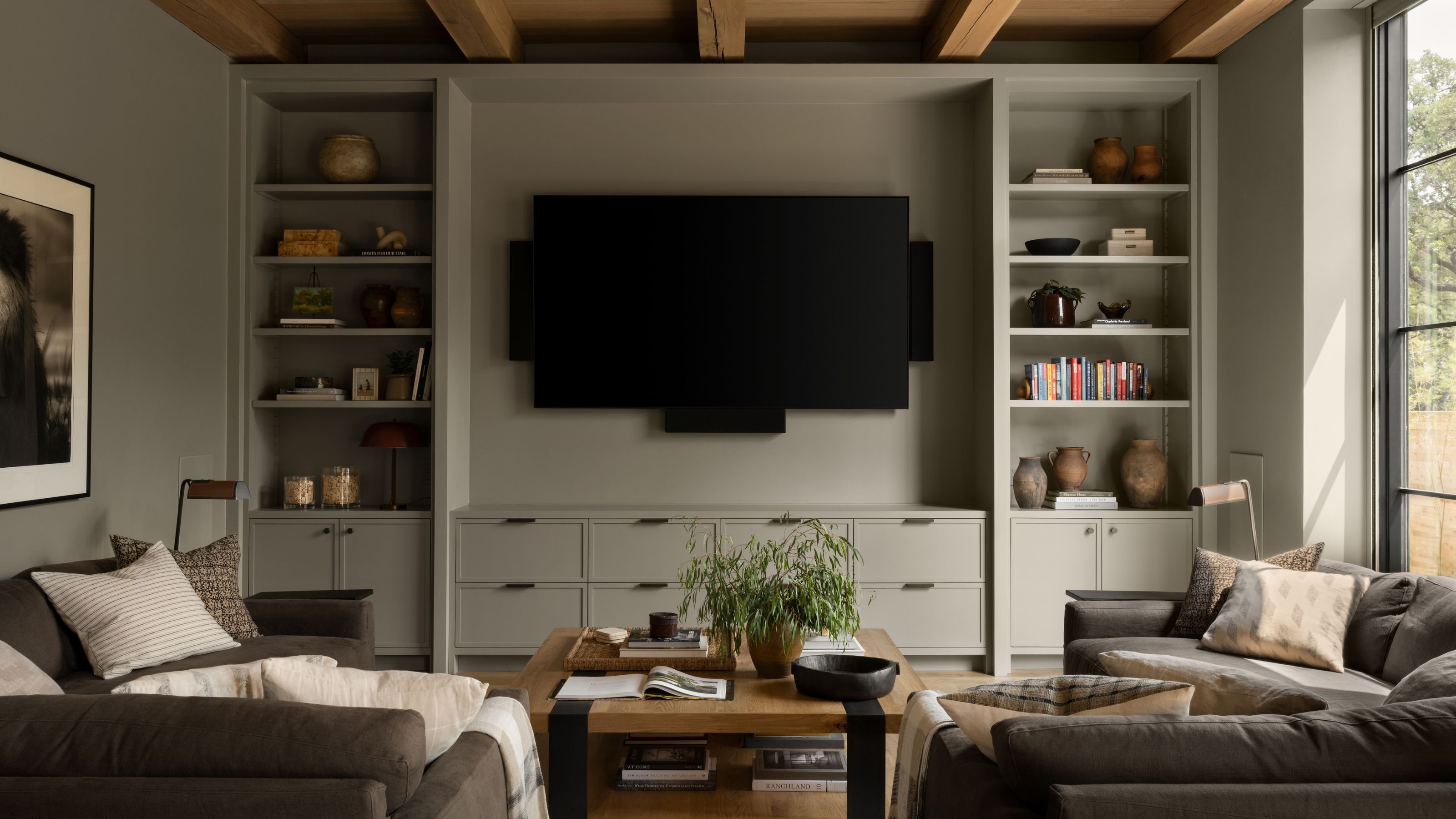 Is Having Two Sofas Facing Each Other Actually Comfortable for Watching TV? Tips for Getting This Trending Layout Right
Is Having Two Sofas Facing Each Other Actually Comfortable for Watching TV? Tips for Getting This Trending Layout RightIt’s a favorite option for homeowners, but combining two sofas facing one another with a TV has its pros and cons — this is what you need to know
By Sarah Warwick
-
 The 7 Biggest TV Mistakes Designers Always See in a Living Room - And How to Set Up Your Tech Instead
The 7 Biggest TV Mistakes Designers Always See in a Living Room - And How to Set Up Your Tech InsteadScreen glare, unsightly cables, neck cramps... a lot can go wrong when it comes to styling a TV in a design-forward living space
By Kelsey Mulvey
-
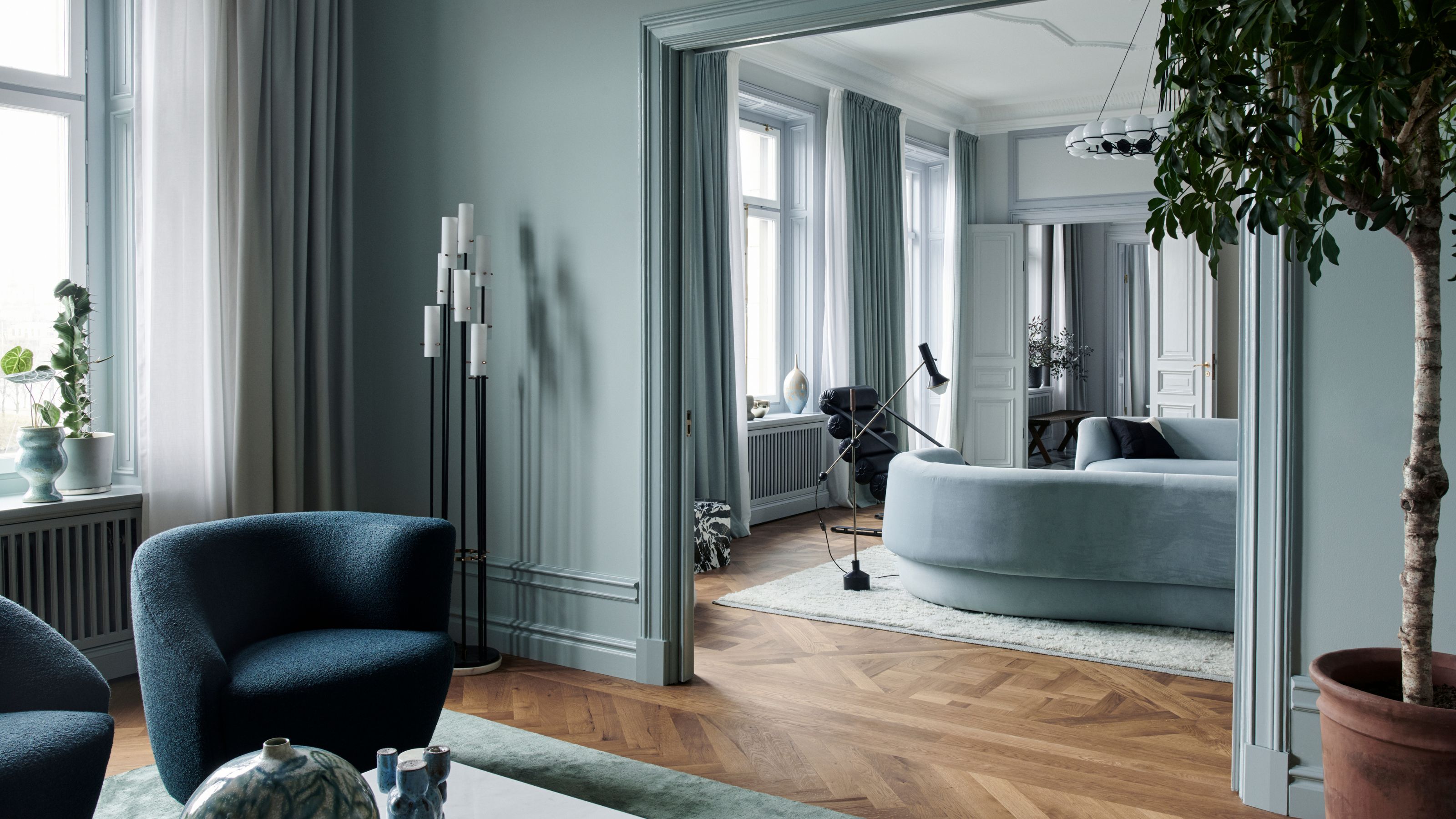 How Much Space Do You Need for Walking Between Furniture? I'm a Spatial Designer, and You'll Want at Least This Much
How Much Space Do You Need for Walking Between Furniture? I'm a Spatial Designer, and You'll Want at Least This MuchThese are the general rules to be guided by when spacing out furniture to ensure you room feels inviting and comfortable
By Delphine Bouvet
-
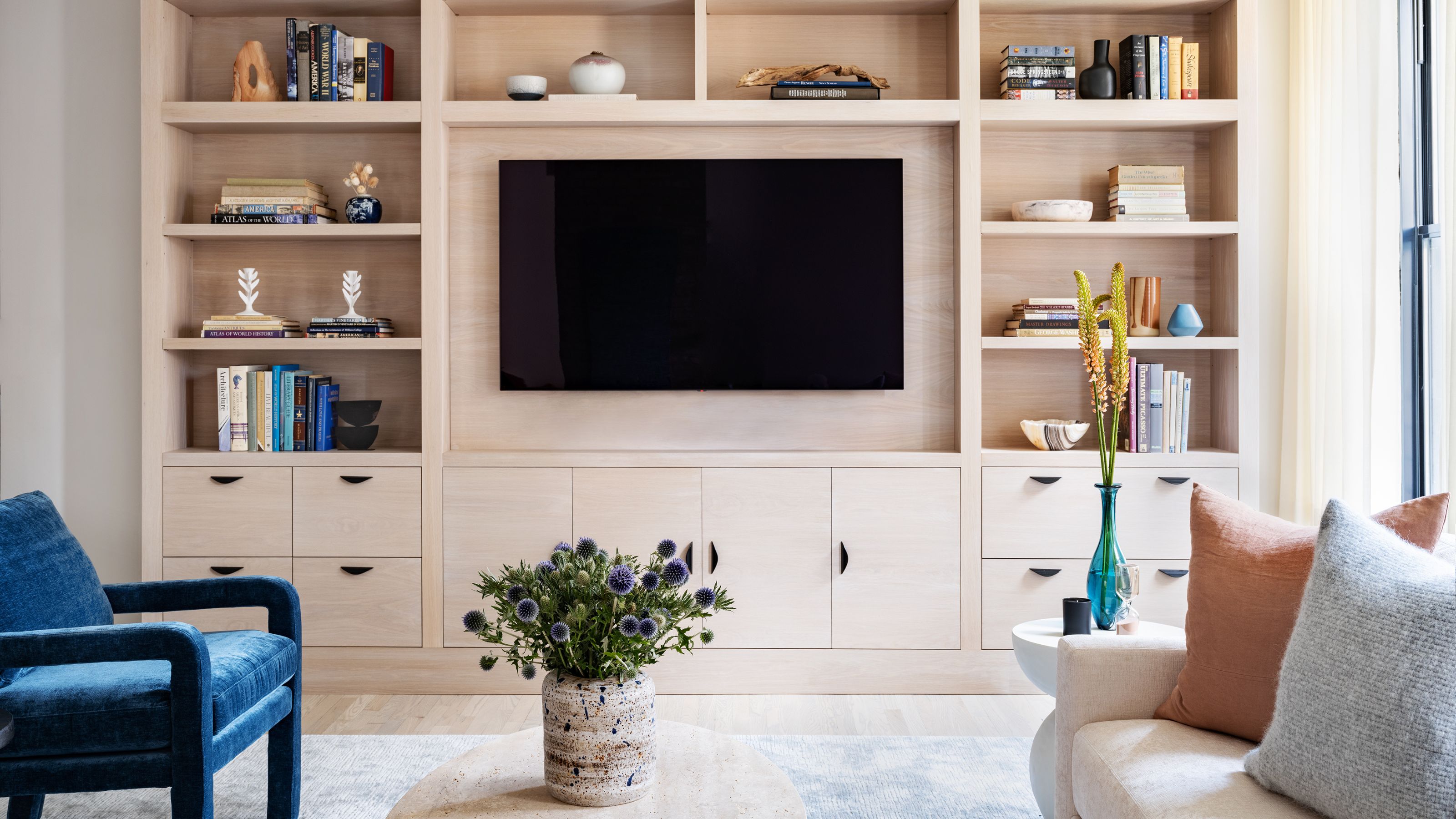 3 Dated Living Room Layouts That Have No Place in 2025 (and How to Fix It If You've Ended Up With One)
3 Dated Living Room Layouts That Have No Place in 2025 (and How to Fix It If You've Ended Up With One)Because your living room should work for the way you live now
By Kristen Flanagan
-
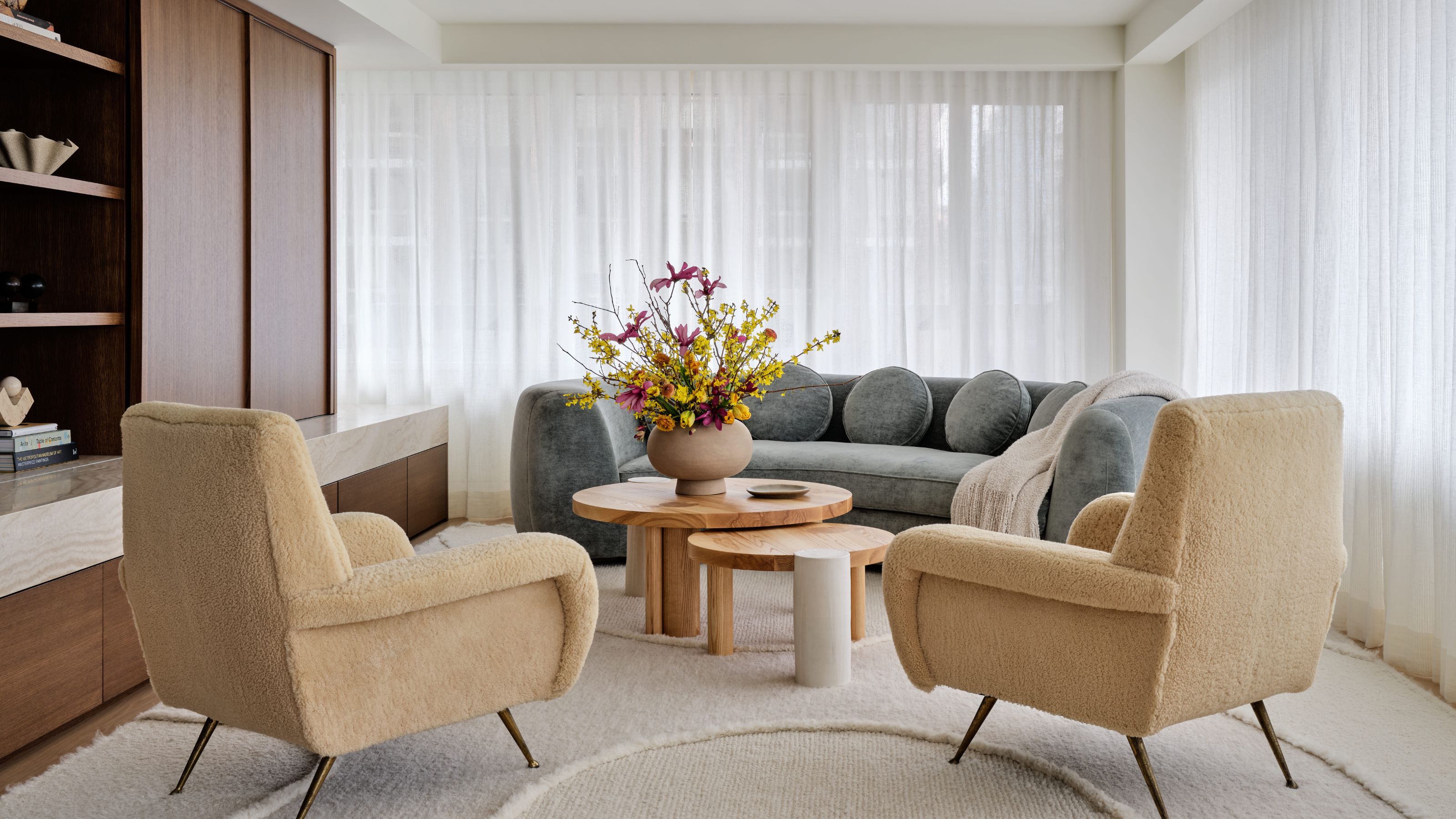 I'm a Spatial Planner — Here's 5 Big Lessons I Want Everyone to Learn to Get the Right Layout for Your Living Room
I'm a Spatial Planner — Here's 5 Big Lessons I Want Everyone to Learn to Get the Right Layout for Your Living RoomDoes something about your space not feel right? The solution could be as simple as fixing your living room's setup
By Delphine Bouvet
-
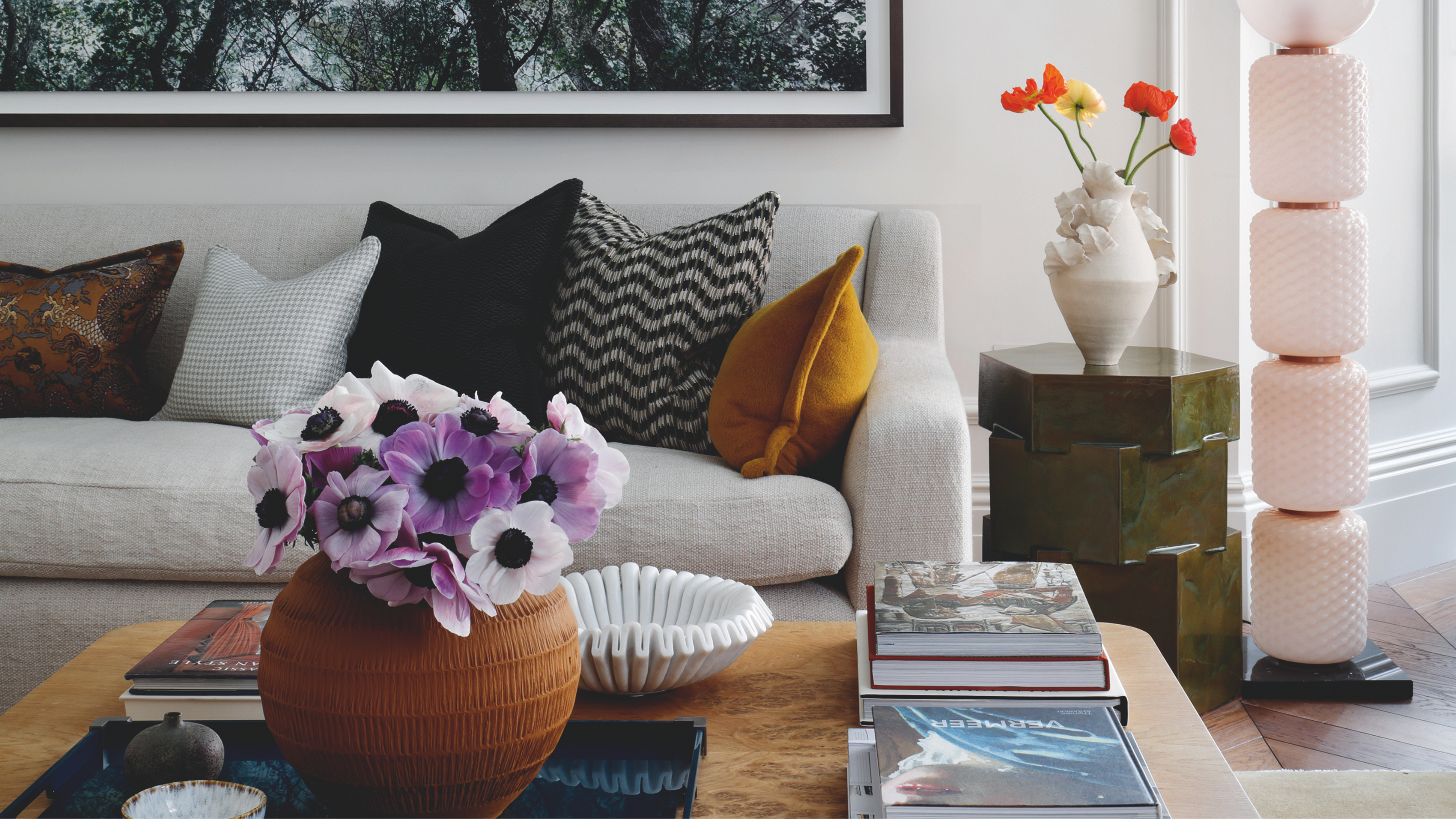 Beware the "Three-Sided" Living Room — Interior Designer Christian Bense on This Mistake, and Designing a Versatile Space
Beware the "Three-Sided" Living Room — Interior Designer Christian Bense on This Mistake, and Designing a Versatile SpaceDesigner Christian Bense knows that a perfect living room should cater to all the sides of your personality, and what pieces allow to be both calm and to have a party
By Christian Bense
-
 Ignoring These 7 Living Room Lighting Mistakes Could Totally Ruin the Way You Feel in the Space, Warn Design Experts
Ignoring These 7 Living Room Lighting Mistakes Could Totally Ruin the Way You Feel in the Space, Warn Design ExpertsEven the fanciest furniture can look cheap under bad lighting — here, experts share the most common faux pas when it comes to lighting your living spaces
By Natasha Brinsmead